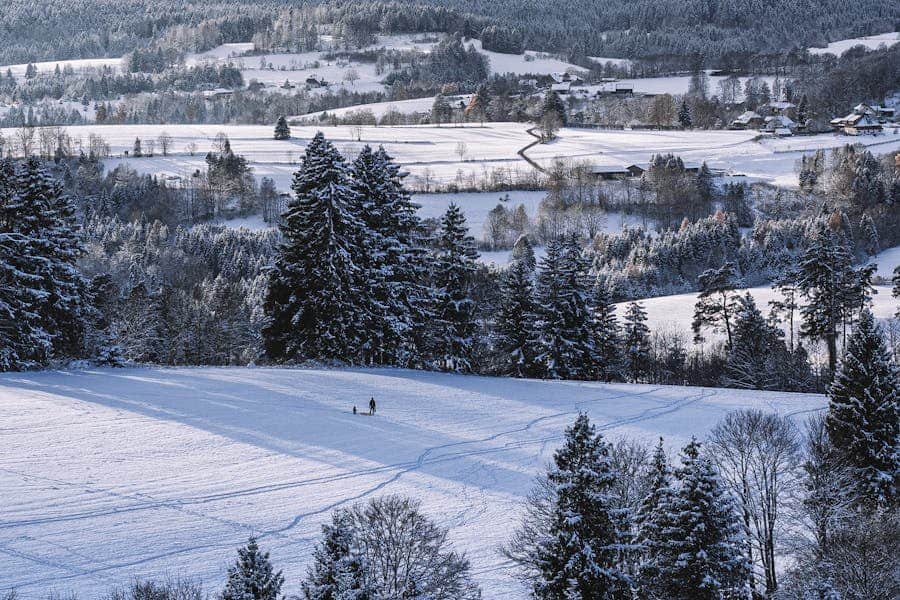Ever wondered why it doesn’t snow in California as often as in other states? Despite its diverse landscapes, California’s snow patterns are influenced by several factors. The coastal regions benefit from the Pacific Ocean’s moderating effect, which keeps temperatures too mild for snow. Inland areas and valleys experience a rain shadow effect due to the Sierra Nevada Mountains, which blocks moist air and reduces snowfall. Northern California sees more snow due to higher elevations and proximity to moisture sources, while southern regions remain drier. Additionally, temperature inversions and urban heat islands in coastal cities further limit snow. Understanding these climatic and geographical influences sheds light on why snow is a rare sight in many parts of California, despite its varied terrain.
The Reasons Behind California’s Minimal Snowfall
California’s minimal snowfall is a result of various climatic and geographical factors that interact to create the state’s distinctive weather patterns. Understanding these reasons provides insight into why many parts of California experience little to no snow.
Coastal Influence: California’s coastal regions, such as Los Angeles and San Diego, are affected by a Mediterranean climate, characterized by mild, wet winters and warm, dry summers. The Pacific Ocean plays a crucial role in moderating temperatures along the coast. During winter, the ocean’s influence keeps temperatures from dropping below freezing, preventing snow formation. Coastal areas remain relatively warm compared to inland regions, which is why snowfall is uncommon in these parts of the state.
Pacific Ocean Effects: The Pacific Ocean exerts a significant impact on California’s weather through the California Current, a cold ocean current flowing southward along the coast. While this current can cool the air, it is often not enough to bring temperatures down to the freezing point required for snow, especially in coastal and low-elevation areas. Additionally, during El Niño events, warmer sea temperatures can lead to even milder winter conditions, reducing the likelihood of snowfall.
Rain Shadow Effect: The Sierra Nevada Mountains play a crucial role in shaping California’s snowfall patterns through the rain shadow effect. As moist air from the Pacific Ocean approaches the Sierra Nevada, it is forced to rise. This rising air cools and loses moisture as precipitation, resulting in heavy snowfall on the western slopes of the mountains. However, by the time this air descends on the eastern side, it is much drier. Consequently, regions east of the Sierra Nevada experience significantly reduced precipitation and minimal snowfall.
Low Elevation: Much of California’s Central Valley and coastal plains are situated at low elevations. These areas typically experience milder winter temperatures due to their lower altitude. Temperatures rarely fall below freezing in these low-lying regions, which limits the potential for snow. Without the necessary cold conditions, snowfall remains rare in these flat areas.
Desert Conditions: Inland desert regions, such as the Mojave and Colorado deserts, experience extreme temperature variations. While winters can be cold, the deserts’ dry conditions and clear skies lead to low humidity levels. This lack of moisture means that even when temperatures drop, there is insufficient humidity to produce significant snowfall. Therefore, these desert areas see only occasional, light snow.
Temperature Inversions: Temperature inversions occur when warmer air traps cooler air near the surface. This phenomenon can prevent cooler, snow-producing air from reaching the ground, leading to fog and smog instead of snow. In coastal and low-elevation regions, inversions contribute to the overall scarcity of snowfall.
Climate Change: Climate change is increasingly influencing California’s snowfall patterns. Rising global temperatures contribute to warmer winters, which further reduces the frequency and amount of snowfall, particularly in coastal and lower-elevation areas. This warming trend exacerbates the already minimal snowfall observed across the state.
California’s minimal snowfall is shaped by coastal climate influences, oceanic effects, the rain shadow phenomenon, low elevation, desert conditions, temperature inversions, and climate change. Each factor plays a role in determining the limited snowfall experienced throughout the state.
What Climate Zones Affect California’s Snowfall?
California’s diverse climate zones significantly influence its snowfall patterns, creating a range of conditions from snow-covered mountains to snow-free coastal areas. Understanding how these climate zones impact snowfall helps explain why snow is not uniformly distributed across the state.
1. Coastal Climate Zones
California’s coastal climate zone, encompassing cities like Los Angeles and San Diego, is characterized by mild, wet winters and warm, dry summers. The influence of the Pacific Ocean moderates temperatures, preventing them from dropping low enough for significant snowfall. Coastal areas are generally too warm in winter for snow to form, resulting in rain rather than snow. Additionally, the urban heat island effect, where cities retain more heat due to buildings and infrastructure, further reduces the likelihood of snow.
2. Mediterranean Climate Zone
The Mediterranean climate zone covers much of Central and Southern California, including regions like Sacramento and the Bay Area. This zone experiences wet winters and dry summers with moderate temperatures. While temperatures in this zone can occasionally drop low enough for snow in higher elevations, lower elevations typically see rain during winter. The Mediterranean climate contributes to the variability in snowfall, with some areas receiving occasional snow but generally not experiencing heavy snowfall.
3. Desert Climate Zone
Inland desert regions, such as the Mojave and Colorado deserts, experience extreme temperature fluctuations with very hot summers and cold winters. Although the winters are cold, the low humidity and clear skies often result in rapid temperature drops at night. These conditions can occasionally lead to light snowfall, but snowfall is generally infrequent and limited in quantity due to the arid environment and lack of moisture.
4. Mountain Climate Zone
The mountain climate zone, including the Sierra Nevada and Cascade ranges, is where California sees the most significant snowfall. Higher elevations in these mountain ranges experience colder temperatures and receive substantial precipitation during winter months. The Sierra Nevada, in particular, acts as a barrier to moisture-laden air masses from the Pacific Ocean, resulting in heavy snowfall on its western slopes. The rain shadow effect on the eastern slopes leads to drier conditions but still allows for occasional snow at higher altitudes.
5. Valley and Basin Climate Zone
The Central Valley and Great Basin regions of California experience a semi-arid climate with hot, dry summers and cooler winters. While these areas generally receive less precipitation, snow can occur in the winter months, particularly at higher elevations within these regions. Snowfall in the valleys and basins is less common compared to mountainous areas, but it can still happen, especially during cold weather events.
Overall, California’s climate zones play a crucial role in shaping the state’s snowfall patterns. From the snow-laden peaks of the mountains to the warm, dry coastal regions, these zones create a diverse range of winter weather conditions across the state.
Comparing California’s Snowfall To Other States
California’s snowfall patterns differ significantly from those of other states, influenced by its unique climate and geographical features. To understand these differences, it’s helpful to compare California’s snowfall with that of states known for their snowy winters.
- California vs. Colorado: Colorado is renowned for its heavy snowfall, particularly in the Rocky Mountains. The state’s elevation and moisture-laden air masses from the Pacific Ocean contribute to substantial snowfall, especially in areas like Aspen and Vail. In contrast, California’s snowfall is more geographically concentrated. While the Sierra Nevada Mountains receive considerable snow, the state’s lower elevations and coastal regions see significantly less snowfall. Colorado’s snow-covered mountains, with their higher altitudes and consistent precipitation, contrast sharply with California’s varied snowfall distribution.
- California vs. New York: New York experiences heavy snowfall, particularly in regions like Buffalo and Syracuse, which are influenced by lake-effect snow from the Great Lakes. This phenomenon occurs when cold air moves over the relatively warmer waters of the lakes, picking up moisture and depositing it as snow. In contrast, California’s snowfall is influenced by its proximity to the Pacific Ocean and its varied terrain. Coastal areas and valleys in California receive less snow due to milder temperatures, while New York’s snow is more widespread and consistent, particularly in areas close to the Great Lakes.
- California vs. Michigan: Michigan also experiences significant snowfall, especially in the Upper Peninsula and northern parts of the state. Like New York, Michigan benefits from lake-effect snow, which results in substantial accumulation during winter months. Michigan’s snowfall is widespread across the state, with heavy snowfalls common in areas away from the Great Lakes. California, however, has a more varied snowfall pattern. The Sierra Nevada Mountains receive considerable snow, but other areas, including much of the central and southern parts of the state, see much less snowfall.
- California vs. Vermont: Vermont, known for its picturesque snowy winters, receives consistent snowfall throughout the winter season. The state benefits from cold temperatures and moisture-laden weather systems moving from the west. Vermont’s snowfall is more predictable and widespread across the state compared to California. In California, snowfall is concentrated in higher elevations, such as the Sierra Nevada, while lower elevations and coastal areas receive minimal snowfall.
- California vs. Alaska: Alaska is renowned for its heavy snowfall, particularly in areas like Anchorage and the Interior region. The state’s cold temperatures and frequent snowstorms contribute to significant snowfall. In comparison, California’s snowfall is more geographically limited. While Alaska experiences widespread and consistent snow coverage, California’s snowfall is confined to higher elevations and specific mountain ranges.
while California does receive substantial snowfall in its mountainous regions, its snowfall patterns differ markedly from other states due to its unique climate influences and geographical features. States like Colorado, New York, Michigan, Vermont, and Alaska experience more consistent and widespread snowfall, highlighting California’s diverse and region-specific winter weather.
The Wrapping Up
California’s lack of widespread snowfall is primarily due to its diverse climate zones and geographical features. Coastal regions benefit from the Pacific Ocean’s moderating effect, keeping temperatures too warm for snow. Inland areas experience a rain shadow effect from the Sierra Nevada Mountains, reducing snowfall. Desert climates and lower elevations also contribute to the rarity of snow. While California’s mountainous regions do receive significant snowfall, the state’s overall climate, influenced by ocean currents, elevation, and local weather patterns, results in a varied and often snow-free winter experience for many areas.
FAQ
Does California Ever Get Snow?
Yes, California does get snow, but its distribution varies widely. Snowfall is common in higher elevations, such as the Sierra Nevada Mountains, where heavy snow can accumulate each winter. However, many coastal and low-elevation areas experience minimal or no snow due to their milder winter temperatures.
Has LA Ever Had Snow?
Yes, Los Angeles has experienced snow, though it’s rare. The city saw its last significant snowfall on January 22, 1962, when about 2.5 inches of snow fell. Such events are uncommon due to the city’s generally mild winter temperatures and coastal climate.
What Is the Coldest Place in California?
The coldest place in California is Death Valley, particularly the Furnace Creek area. Despite being known for its extreme heat, Death Valley can experience extremely cold temperatures in winter, with lows occasionally dropping below freezing, particularly in the higher elevations of the valley.










Leave a Reply